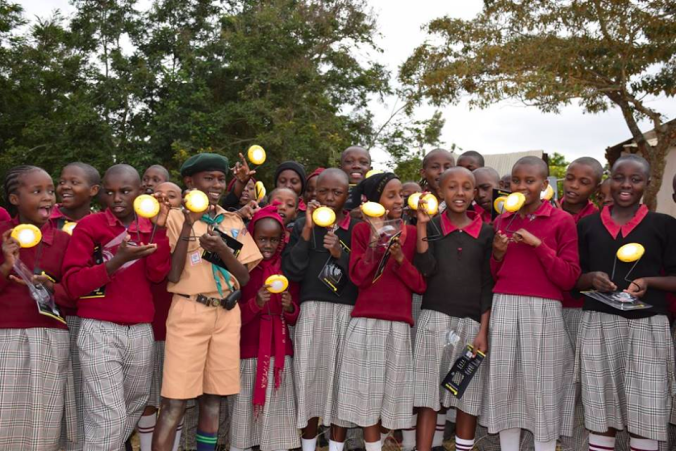The School Fund’s staff, Executive Director Elizabeth Texeira and Director of Programs Michael Childress, are on a three week trip to East Africa to meet seven of our field partners in the region. They will be writing short posts about their experience, so check back for an update soon!
(An update from Michael, with more about our partner Abaarso in Somaliland.)
In a previous post I briefly described the work of Abaarso School. Abaarso is currently the only school in Somaliland that has been able to admit students to universities outside of the country. I recently spent a week at Abaarso to learn more about the local education sector and why this school has been so successful.

During my visit I spoke with the former Director General of Education, Mohamed Hassan whose own children attend Abaarso. He explained some of the challenges facing the education sector in Somaliland to me. These include a significant lack of school buildings and inadequate infrastructure at existing schools, insufficient learning materials and a growing but unregulated private sector. Mr. Hassan’s greatest concern, however, was the lack of trained teachers in the country.
These concerns are borne out in a recent report written by the Ministry of Education and UNICEF. The report finds that only 38% of primary school teachers have the minimum required teaching qualifications. It also indicates that more than 60% of primary schools and 40% of high schools lack clean drinking water. These barriers help to explain why less than half of all primary school aged students—and less than a quarter of high school aged students—are enrolled in school today.

Students entering Abaarso are among the brightest in the country. In 2016, over 1,000 students took the entrance exam for just 48 available places. In addition to being bright, teachers explain that admitted students are highly motivated. Despite their enthusiasm and high performance (relative to their peers in Somaliland) newly admitted students typically have a fourth grade mathematics level and only rudimentary English skills.
To prepare students for university, Abaarso aims to increase learning by 2 to 2.5 levels per year. The school does this by keeping the student-teacher ratio low (about 13:1), encouraging student-centered learning and providing additional learning opportunities outside of class. One of the most striking features of the school is the level of access that students have to teachers. During my visit it was common to see teachers available to students until 9 o’clock in the evening.
Abaarso also involves students and parents in the creation of the school culture and integration into the local community. Students help set classroom norms, provide feedback to administrators about school policies and assist with the day-to-day operation of the school. The board and parent committee help the school negotiate local cultural norms and advocate for the school with local stakeholders.

The annual tuition at Abaarso is $1,800 per student. About one-third of the students receive need-based scholarships. Teachers report that the students receiving scholarships perform better than those paying full tuition. In the 2015/2016 school year, The School Fund help provide scholarships to 23 students at Abaarso.
You can learn more about these students and help fund a scholarship for the next school year at The School Fund.















 The School Fund is lucky to be supported by a circle of enthusiastic supporters, but not many can rival our Teen Board, a group of Palo Alto teens who churn out a steady stream local events that get our cause out to our community—and make giving fun. Two weeks ago, our Teen Board planned a special TSF day with Amici’s East Coast Pizzeria and it was a huge success! Thanks Teen Board and all our supporters who came out for a slice!
The School Fund is lucky to be supported by a circle of enthusiastic supporters, but not many can rival our Teen Board, a group of Palo Alto teens who churn out a steady stream local events that get our cause out to our community—and make giving fun. Two weeks ago, our Teen Board planned a special TSF day with Amici’s East Coast Pizzeria and it was a huge success! Thanks Teen Board and all our supporters who came out for a slice!


